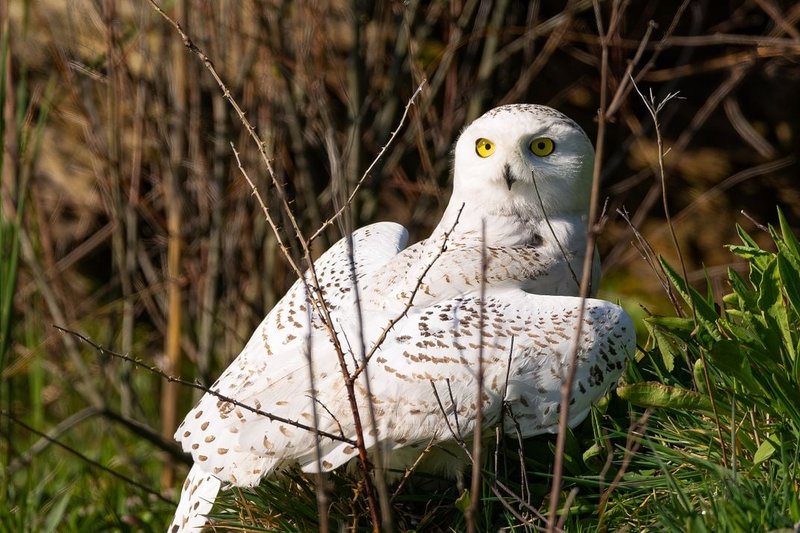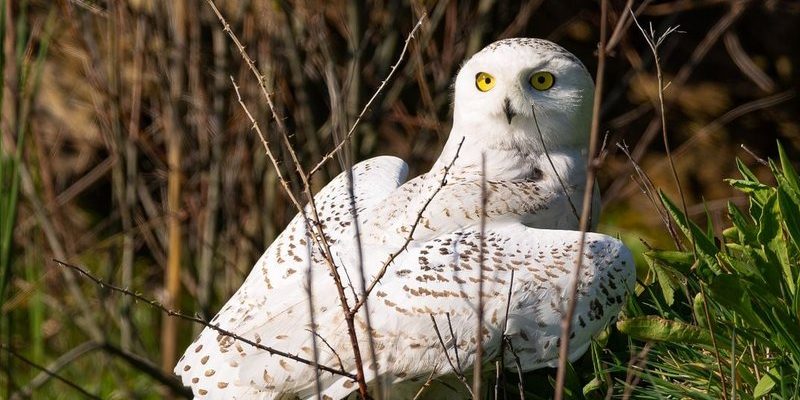
Here’s the thing: snowy owls aren’t just any birds. They embody the harsh yet stunning realities of the Arctic. Their journey through evolution is a story deeply intertwined with the environment they inhabit. Let’s dive into the fascinating evolution and history of the snowy owl, exploring how they adapted to survive in one of the world’s most extreme habitats.
Origin and Evolution of Snowy Owls
The snowy owl, known scientifically as *Bubo scandiacus*, belongs to the family of true owls, Strigidae. These birds have been around for a long time, with fossils indicating their presence dating back to the late Pleistocene Epoch, around 12,000 years ago. During this time, the Earth was undergoing significant climate changes, which prompted various adaptations in many species. The snowy owl was no exception.
You might be wondering how snowy owls evolved to thrive in the cold, harsh climates of the Arctic. Well, they’re uniquely built for survival. Their feathers, which appear white and fluffy, are actually specialized for insulation. They retain body heat, allowing these birds to endure frigid temperatures that often plummet well below freezing. You could say their plumage acts like a down comforter, creating a cozy haven in the bitter cold.
In addition to their remarkable feathers, snowy owls have strong, powerful talons and beaks designed for hunting. They primarily prey on small mammals, particularly lemmings, and have developed exceptional night vision to spot their dinner in low light conditions. Over time, these adaptations have ensured their dominance in the Arctic ecosystem, making them one of the top predators in their habitat.
Physical Characteristics of Snowy Owls
Snowy owls are striking in appearance. With their large, round faces and prominent yellow eyes, they exude a sense of wisdom that many find captivating. One might even say they look like the perfect embodiment of winter itself. Adult male snowy owls are almost entirely white, while females tend to have more mottled patterns of brown and white. This coloring not only helps them blend into the snowy environment but also plays a role in their social behaviors and breeding.
Let’s break down some of their key physical features:
- Size: Snowy owls are relatively large, with a wingspan of about 4.5 to 5.5 feet. Males are generally smaller than females.
- Eyes: Their bright yellow eyes provide excellent vision, crucial for spotting prey in low-light conditions.
- Feathers: Their thick feathers trap warmth and provide camouflage against the snow.
These characteristics help them navigate their environment effectively, but they also create a certain mystique around the snowy owl. It’s no wonder they’ve become symbols of wisdom and mystery in various cultures throughout history.
Habitat and Geographic Distribution
Snowy owls primarily inhabit the Arctic regions, including parts of Alaska, Canada, and Greenland. However, their range can extend further, especially during winter migrations when they occasionally travel south. During these migrations, they’ve been spotted in northern parts of the continental United States and even as far south as Texas on rare occasions.
The Arctic tundra, with its sparse vegetation and open landscapes, is their ideal habitat. Here, they can hunt lemmings and other small mammals that thrive in this harsh environment. Interestingly, snowy owls have a unique adaptation that allows them to find food even when covered in snow: they can hear the soft movements of rodents beneath the surface, using their exceptional hearing to locate prey.
With climate change impacting these regions, the snowy owl’s habitat could be at risk. Warmer temperatures may alter their hunting grounds, forcing them to adapt or migrate to find suitable living conditions. This changing landscape is a concern for conservationists, highlighting the need for awareness about their habitat and the species that depend on it.
Behavior and Hunting Techniques
Snowy owls are fascinating creatures, especially when it comes to their behavior. Unlike many other owl species that are strictly nocturnal, snowy owls can be active during the day. This behavior is particularly evident during the breeding season when they need to hunt to feed their young. Imagine these majestic birds soaring through bright blue skies, scanning the ground for any sign of movement—it’s a sight to behold.
Their hunting techniques are quite impressive. Snowy owls use a combination of stealth and speed to catch their prey. They often perch on elevated spots, like fences or snow mounds, waiting patiently for the right moment to strike. When they spot a lemming or another small mammal, they glide down gracefully and use their powerful talons to capture it.
What’s even more interesting is their ability to store food. When snowy owls catch more prey than they can eat, they may cache their excess food by hiding it under a pile of snow. This behavior ensures they have a meal for later, which is especially important during harsh winters when food can be scarce.
Cultural Significance and Myths
Snowy owls have played a significant role in various cultures and mythologies around the world. In many Indigenous Arctic cultures, they are seen as symbols of protection and wisdom. The Inuit people, for example, have long regarded these birds with reverence and respect, often associating them with the spirits of the ancestors.
In modern times, snowy owls gained even more fame through popular culture. Who can forget the beloved character Hedwig from the Harry Potter series? This fictional snowy owl captured the hearts of millions and introduced many to the beauty and mystery of real snowy owls. The symbolism of snowy owls extends even further, often representing change, insight, and the ability to see what others cannot.
Despite their cultural significance, it’s crucial to remember that snowy owls are still wild animals that deserve our respect and protection. As their habitats face increasing threats, it’s vital for us to acknowledge their importance in the natural world and advocate for their conservation.
Conservation Status and Threats
The snowy owl is currently listed as “Least Concern” by the International Union for Conservation of Nature (IUCN). However, this doesn’t mean they’re free from threats. Climate change is one of the significant issues facing these birds, as it alters their habitat and impacts their prey populations. Warmer temperatures can lead to less reliable hunting conditions and a potential decline in lemming numbers.
Additionally, human encroachment can pose challenges for snowy owls. Development in the Arctic, habitat destruction, and pollution can disrupt their breeding and feeding areas. Bird watchers and enthusiasts should be mindful when observing snowy owls to avoid disturbing their natural behaviors.
Conservation efforts are underway to monitor snowy owl populations and protect their habitats. Organizations are working to raise awareness about the challenges they face, emphasizing the importance of preserving the Arctic ecosystem for these magnificent birds and the many species that share their environment.
Fascinating Facts About Snowy Owls
Snowy owls are full of surprises, and there are plenty of fun facts that make them even more intriguing. Here are a few highlights:
- High-altitude flyers: Snowy owls can fly at altitudes of up to 6,500 feet!
- Unique vocalizations: They communicate using a variety of sounds, including hoots, whistles, and clicks.
- Breeding season: Snowy owls typically breed between May and June, laying an average of three to eleven eggs.
These facts just scratch the surface of what makes snowy owls unique. Their ability to adapt, their cultural significance, and the challenges they face today make them one of the most fascinating birds on the planet.
In closing, the story of snowy owls is one of resilience and beauty. Understanding their evolution, behavior, and the threats they face allows us to appreciate these majestic creatures even more. Let’s continue to advocate for their protection and ensure they thrive in their natural habitats for generations to come. Snowy owls are not just birds; they are a reminder of the delicate balance of nature and the importance of preserving our environment.

